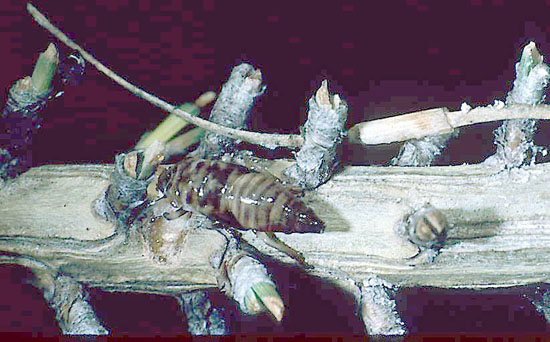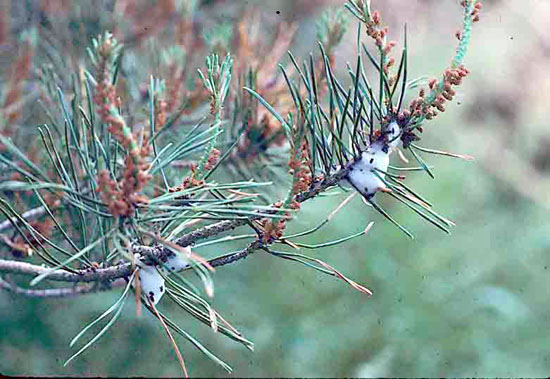Issue 11, July 2, 2009
Spittlebugs
Spittlebugs tend to be more numerous in wet springs. Although most of these insects do not cause severe damage, the spittle of the nymphs is noticeable to commercial clientele. Meadow spittlebug commonly attacks deciduous plants, particularly clover, and many flowers, as well as arborvitae. Pine spittlebug attacks Scotch, Austrian, and white pines, spruces, and firs. Juniper spittlebugs attack junipers. The meadow spittlebug and juniper spittlebug usually cause little damage, but the pine spittlebug requires control if it is numerous.

Spittlebugs overwinter as eggs in the stems of plants. The hatching nymphs feed on stems and secrete a frothy liquid from the anus and the epidermal glands. The nymphs then spread this spittle over their body until they are entirely enclosed in what appears to be a glob of white spit. The nymphs take up to seven weeks to mature. If you remove the spittle, you can see that meadow spittlebug nymphs are green and juniper and pine spittlebug nymphs are brown. Both spittlebugs emerge as brownish adults that look like wide leafhoppers. They are about 3/8 inch long and elongate to oval in shape. Adult meadow spittlebugs vary in color, ranging from tan to dark brown and may have light stripes running along their sides. Juniper spittlebug adults are tan. Pine spittlebug adults are either a mottled medium brown or dark reddish brown.
Both nymphs and adults feed on plant sap. However, in heavy infestations, the wounds caused by pine spittlebug feeding result in resinous deposits that can restrict sap flow. Pine spittlebug feeding sites also serve as an entrance point for Diplodia shoot blight. Meadow spittlebug is rarely numerous enough to cause damage. Most damage caused by meadow and juniper spittlebugs is aesthetic, due to the presence of the spittle masses.

Pine spittlebug nymphs can be controlled with a forceful spray of cyfluthrin (Tempo, Bayer Advanced Multi-Insect Killer), acephate (Orthene), carbaryl (Sevin), or dimethoate (Cygon). Dimethoate is not labeled for landscape use but can be used in nurseries. Meadow and juniper spittlebug nymphs can be washed off of plants with forceful streams of water. In rare instances, acephate or carbaryl may be needed.--Phil Nixon
Author:
Phil Nixon